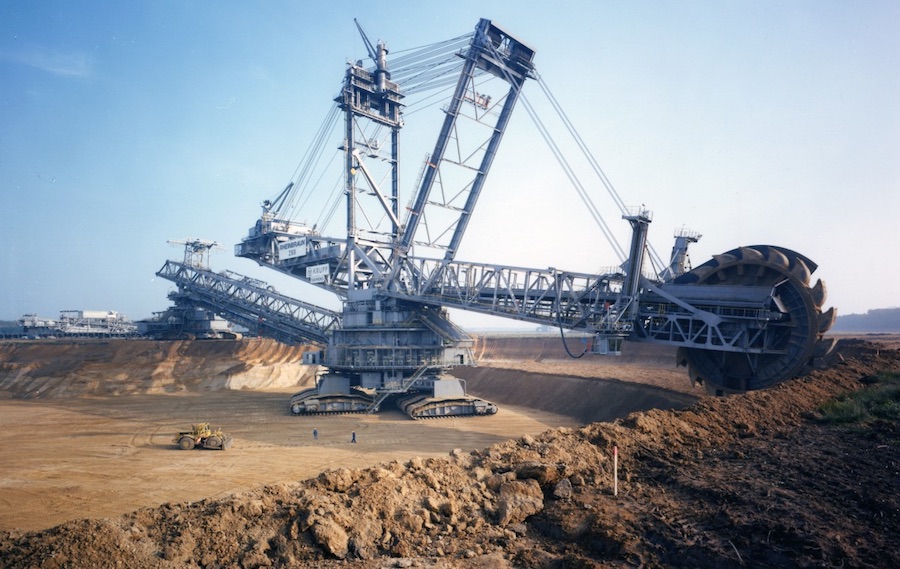
Thyssenkrupp AG is gearing up for its most difficult sale yet — the disposal of its heart-and-soul steel business, the next step in a dramatic downsizing that’s pulling the manufacturer back from the brink.
Europe’s steelmaking industry has struggled amid rising cost for pollution and cheaper imports from Asia. Thyssenkrupp has failed to find an external partner for the business and a spinoff is proving difficult because of the unit’s high pension burden, powerful labor unions and the vast investments needed to decarbonize steel production.
“This is a very complex undertaking characterized by economic challenges and a large number of uncertainties,” Chief Financial Officer Klaus Keysberg said Thursday, adding that the company needs more time to come up with a concrete plan for the business. “Nevertheless, we are convinced that a stand-alone solution offers the best future prospects.”
Chief Executive Officer Martina Merz is leading a deep restructuring of the conglomerate, which was fighting for survival even before the pandemic hit. Once synonymous with German industrial prowess, Thyssenkrupp has suffered a cash drain as a global steel glut compounded profound structural issues across the firm.
After selling its prized elevator unit for 17.2 billion euros ($19.5 billion) last year, the manufacturer reached agreements during the summer to offload smaller mining and infrastructure businesses and is pushing ahead with further streamlining.
The overhaul is starting to pay off. Thyssenkrupp said it expects expects cash flow to break even this year — which would end a four-year money drain — and earnings to double as the effects of the turnaround start to take hold. Activist investor Cevian Capital AB, Thyssenkrupp’s second-biggest shareholder, said it’s “pleased” with progress streamlining the company.
“We believe the guidance, even if free cash flow was not firmly committed to be positive yet, should be well received,” Jefferies analyst Alan Spence said in a report.
Thyssenkrupp gained 6.7% as of 1:23 p.m. in Frankfurt. The shares have climbed by about a third this year.
Thyssenkrupp’s plans come amid renewed focus on slimming down industrial conglomerate structures — prompted by the high-profile breakups of General Electric Co., Johnson & Johnson and Japan’s Toshiba Corp. Siemens AG said last week it expects higher profit margins next year as it reaps the benefits of years-long streamlining that its arch-rival GE is starting to embark on.
Thyssenkrupp said Thursday its restructuring would continue with plans to separate the Uhde Chlorine Engineers unit, confirming an earlier report by Bloomberg News. The division, said to be worth as much as 5 billion euros, produces plants that generate hydrogen from renewable electricity, a business that requires investment to benefit from the global shift to clean energy.
The company said it prefers an initial public offering and seeks to retain a majority interest in the business.
Spinning off the steel unit may be more challenging. While the division swung to a profit in the financial year ended September on the back of rising steel prices, its capital-intensive mills require around 10 billion euros in investment to convert to low-emissions production.
An attempt by Thyssenkrupp to merge the business with the European unit of India’s Tata Steel Ltd. was scrapped amid European Union antitrust concerns and a bid from British tycoon Sanjeev Gupta unraveled earlier this year due to a lack of financing.
In its earnings report released Thursday, the maker of industrial machinery, automotive parts and submarines said it’s benefiting from the global economic recovery and its restructuring measures. Thyssenkrupp’s adjusted earnings before interest and taxes last year rose to 796 million euros on sales of 34 billion euros.
Still, the company is grappling with widespread supply-chain issues that are disrupting production across many industries.
“Enormous challenges remain, especially due to the semiconductor shortage and the uncertainties arising from the coronavirus pandemic,” Merz said.
(By William Wilkes, with assistance from Christoph Rauwald)
Comments